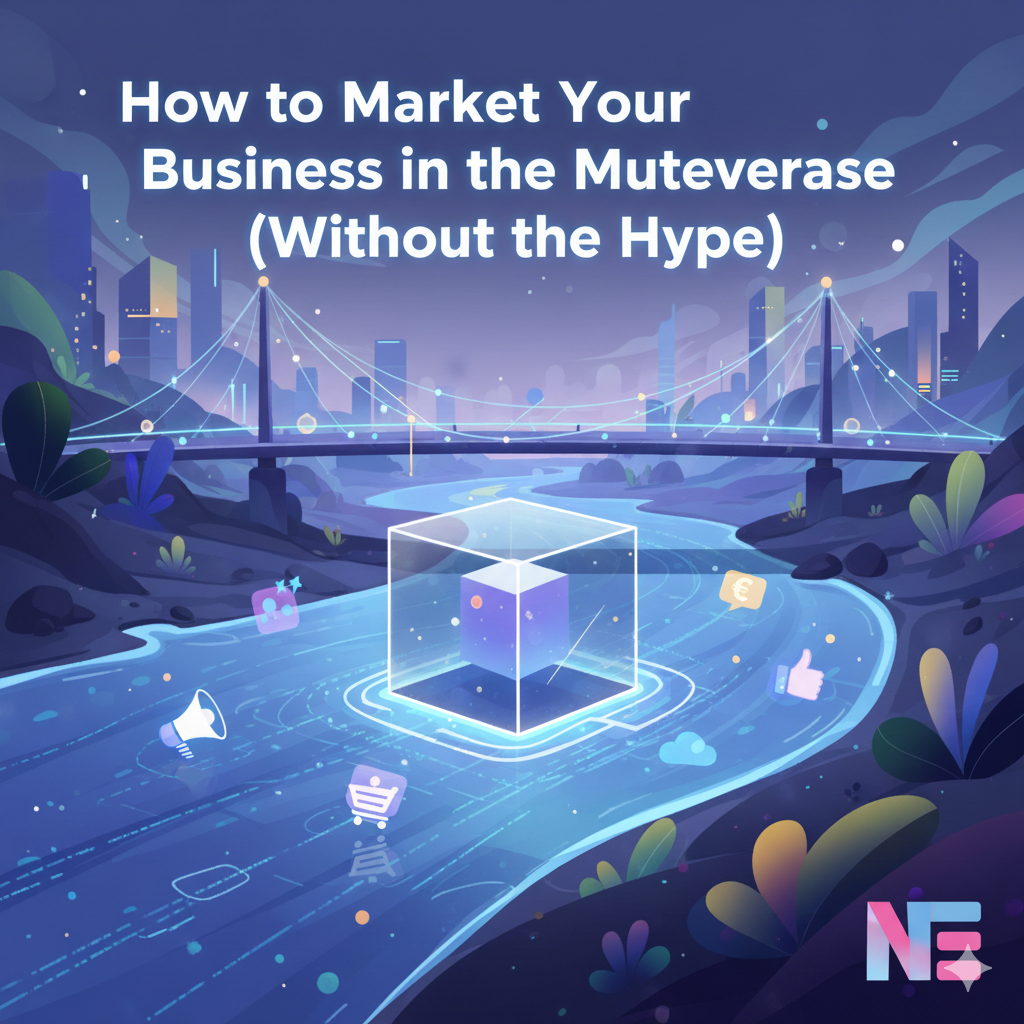The term metaverse has been thrown around for years, often surrounded by big promises, flashy headlines, and inflated expectations. For many businesses, this hype made the metaverse sound like a futuristic playground reserved for tech giants and gamers. But in 2025, the conversation has shifted—away from buzzwords and toward practical opportunities.
The reality? The metaverse is no longer a novelty. It’s a growing collection of immersive digital spaces where people connect, work, shop, and play. For forward-thinking businesses, it’s another channel—like social media or e-commerce—that can be used strategically to reach and engage audiences.
Here’s how to market your business in the metaverse without getting lost in the hype.
Step 1: Understand What the Metaverse Really Is
The metaverse isn’t a single platform—it’s an ecosystem of virtual worlds, AR/VR experiences, and 3D environments where users interact in real time. Examples include:
- Gaming spaces: Roblox, Fortnite, Minecraft
- Virtual commerce: Decentraland, The Sandbox
- AR/VR experiences: Meta’s Horizon Worlds, Spatial, or even product try-on apps
- Hybrid digital events: Virtual conferences, 3D showrooms, and branded experiences
For marketers, the metaverse should be treated as a channel, not a magic bullet.
Step 2: Align Metaverse Marketing with Real Goals
Instead of diving in because it’s trendy, ask: How does this help my business objectives?
- Brand Awareness: Hosting a virtual concert or sponsoring an in-game event.
- Customer Engagement: Creating an interactive showroom or AR try-on feature.
- Sales & Conversions: Selling digital products (NFTs, skins, collectibles) or driving real-world purchases through immersive experiences.
- Community Building: Opening branded hubs where users can hang out and interact.
When tied to measurable goals, metaverse marketing feels less like hype and more like smart strategy.
Step 3: Start Small with Accessible Experiences
Not every business needs a million-dollar virtual world. Start with low-barrier tactics:
- AR Filters & Lenses – Create branded AR experiences on Instagram, Snapchat, or TikTok.
- Virtual Product Demos – Let customers “try” furniture, makeup, or apparel digitally.
- Branded Partnerships – Collaborate with creators or game developers to place your brand inside popular metaverse environments.
These entry points are cost-effective and already familiar to consumers.
Step 4: Prioritize Value Over Gimmicks
Audiences are quick to dismiss gimmicky campaigns. Instead, create experiences that add real value:
- Help customers make better purchase decisions (virtual try-ons, 3D walkthroughs).
- Provide exclusive experiences (VIP virtual events, gamified loyalty programs).
- Build convenience (AI assistants or customer service embedded in VR/AR).
If your metaverse presence solves a problem or enriches the customer journey, it will feel relevant—not forced.
Step 5: Keep It Human-Centric
Technology should enhance relationships, not replace them. In the metaverse, prioritize:
- Storytelling – Use immersive environments to tell your brand’s story in new ways.
- Community – Encourage interaction between users, not just between brand and customer.
- Accessibility – Ensure experiences are easy to use and inclusive, not limited to expensive headsets or niche platforms.
Step 6: Measure, Learn, and Adapt
Like any digital channel, marketing in the metaverse requires ongoing testing. Track:
- Engagement metrics (time spent in your virtual experience)
- Conversions (sales, sign-ups, or digital asset purchases)
- Sentiment (how users feel about your brand presence)
This feedback loop ensures you’re not just “being there” but actually creating ROI.
Final Thoughts
In 2025, the metaverse isn’t about hype—it’s about practical digital engagement. Businesses that approach it strategically can create experiences that are immersive, memorable, and measurable.
You don’t need to build the next Decentraland or spend millions on VR. You just need to ask: How can this technology help my customers and my business right now?
The brands that answer that question will cut through the noise and thrive in the next era of digital marketing.


